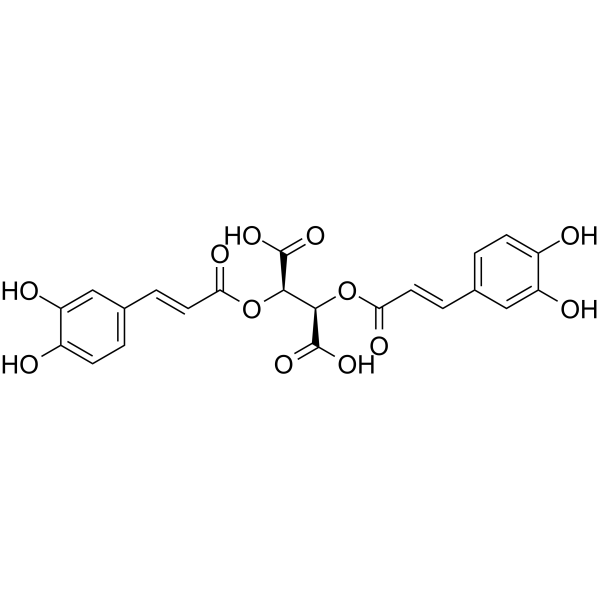Reactive Oxygen Species
Reactive oxygen species (ROS), such as superoxide anion (O2-), hydrogen peroxide (H2O2), and hydroxyl radical (HO•), consist of radical and non-radical oxygen species formed by the partial reduction of oxygen. Cellular ROS are generated endogenously during mitochondrial oxidative metabolism as well as in cellular response to xenobiotics, cytokines, and bacterial invasion.
ROS also activates MAPK pathways by the direct inhibition of MAPK phosphatases. Through PTEN, the PI3K pathway is subject to reversible redox regulation by ROS generated by growth factor stimulation. The activation of autophagy may be a cellular defense mechanism in response to ROS.
Targets for Reactive Oxygen Species
Products for Reactive Oxygen Species
- Cat.No. Product Name Information
-
GC41623
β-Elemonic Acid
β-Elemonic acid is a triterpene isolated from Boswellia (Burseraceae) that exhibits anticancer activity.
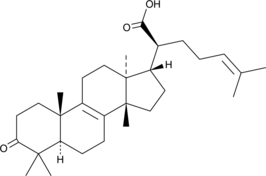
-
GC41502
β-Myrcene
β-Myrcene is a terpene that has been found in Cannabis and has antioxidative properties.

-
GC67191
(±)-α-Tocopherol nicotinate
(±)-α-Tocopherol nicotinate, vitamin E - nicotinate, is an orally active fat-soluble antioxidant that prevents lipid peroxidation in cell membranes. (±)-α-Tocopherol nicotinate is hydrolysed in the blood to α -tocopherol and niacin and may be used in studies of related vascular diseases.
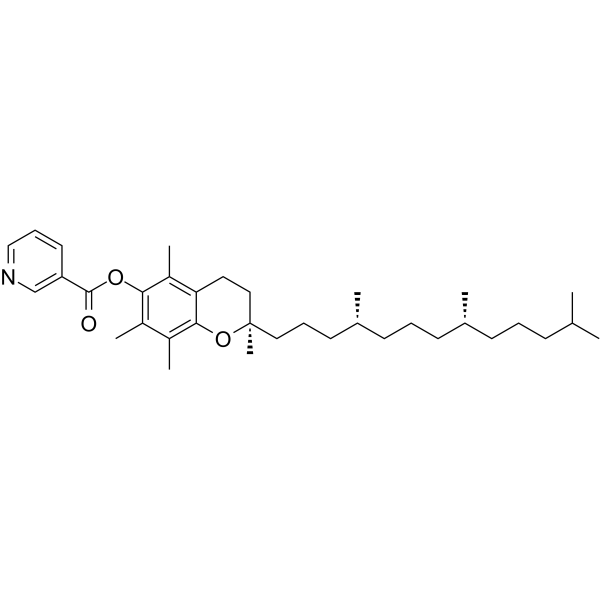
-
GC39271
(±)-Naringenin
A citrusderived flavonoid
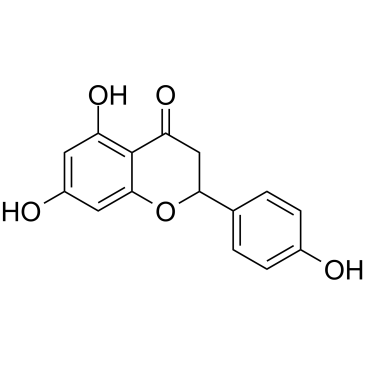
-
GC40355
(±)13-HpODE
(±)13-HpODE is a racemic mixture of hydroperoxides derived non-enzymatically from linoleic acid through the action of reactive oxygen species.

-
GC40809
(+)-β-Citronellol
(+)-β-Citronellol (D-Citronellol) is an alcoholic monoterpene found in geranium essential oil.

-
GC63969
(+)-Schisandrin B
(+)-Schisandrin B is an enantiomer of Schisandrin B.
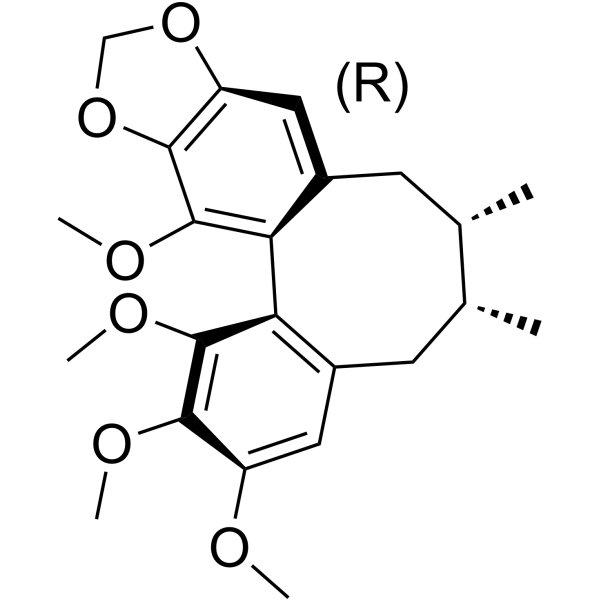
-
GC14049
(-)-Epigallocatechin gallate (EGCG)
(-)-Epigallocatechin Gallate sulfate (EGCG) is a major polyphenol in green tea that inhibits cell proliferation and induces apoptosis. In addition, it inhibits the activity of glutamate dehydrogenase 1/2 (GDH1/2, GLUD1/2) ..
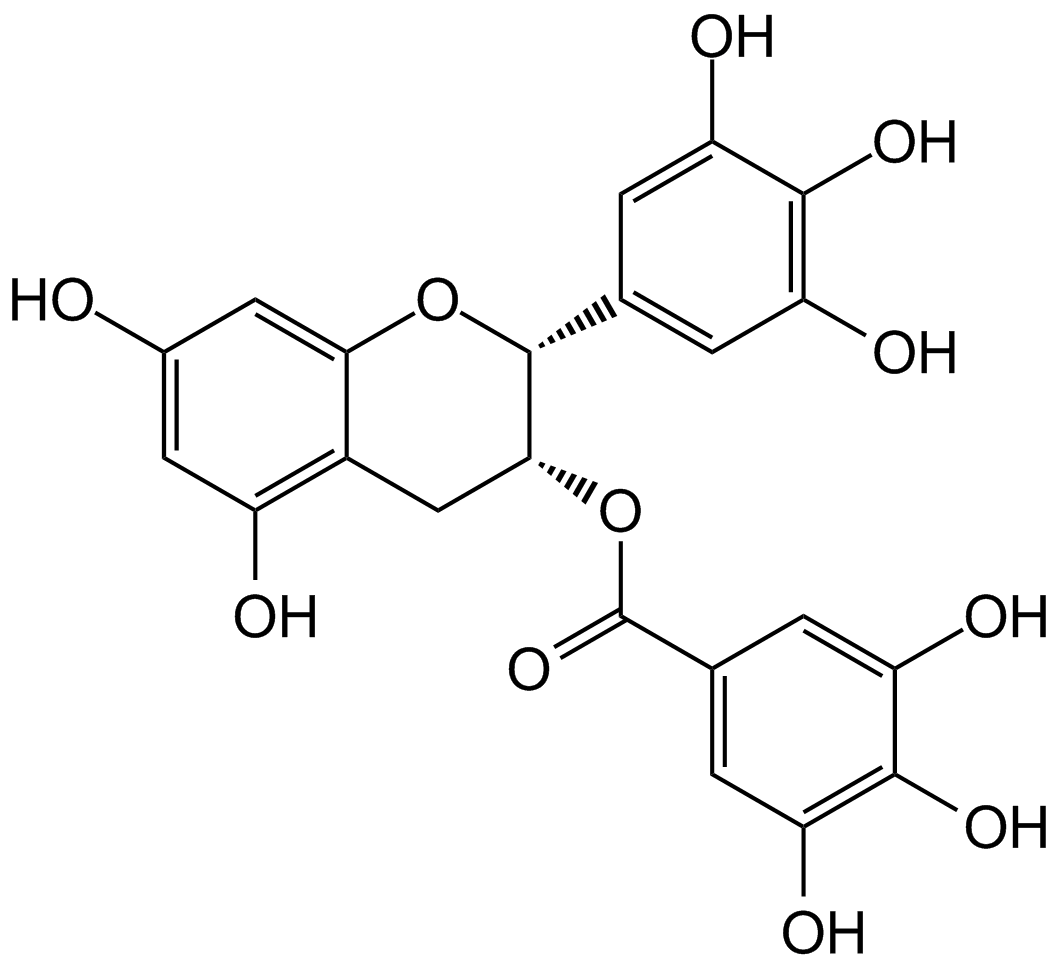
-
GC45248
(-)-FINO2
(-)-FINO2 is a ferroptosis-inducing peroxide compound that indirectly inhibits glutathione peroxidase 4 (GPX4) and oxidizes iron.

-
GC38316
(-)-Limonene
(-)-Limonene ((S)-(-)-Limonene) is a monoterpene found in many pine-needle oils and in turpentine.
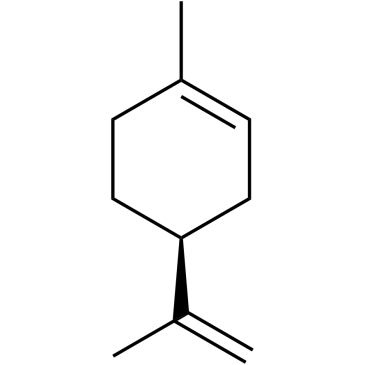
-
GC41700
(E)-2-(2-Chlorostyryl)-3,5,6-trimethylpyrazine
(E)-2-(2-Chlorostyryl)-3,5,6-trimethylpyrazine (CSTMP) is a stilbene derivative with antioxidant and anticancer activities.
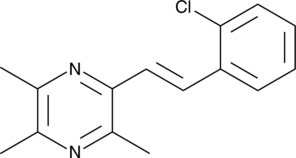
-
GC61668
(E)-3,4-Dimethoxycinnamic acid
(E)-3,4-Dimethoxycinnamic acid is the less active isomer of 3,4-Dimethoxycinnamic acid.
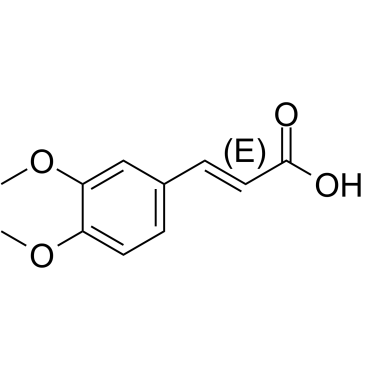
-
GC39747
(E/Z)-GSK5182
(E/Z)-GSK5182 is a racemic compound of (E)-GSK5182 and (Z)-GSK5182 isomers.
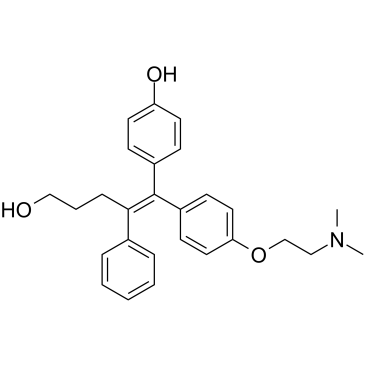
-
GC41721
(R)-α-Lipoic Acid
(R)-α-Lipoic acid is the naturally occurring enantiomer of lipoic acid, a cyclic disulfide antioxidant.

-
GC41837
1,3,7-Trimethyluric Acid
1,3,7-Trimethyluric acid is a methyl derivative of uric acid and a product of C-8 oxidation of caffeine by cytochrome P450 enzymes.

-
GC46387
1,3,7-Trimethyluric Acid-d9
An internal standard for the quantification of 1,3,7-trimethyluric acid
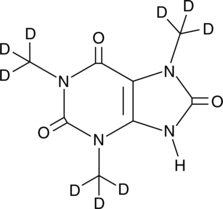
-
GC35037
1,3-Dicaffeoylquinic acid
1,3-Dicaffeoylquinic acid is a caffeoylquinic acid derivative, and activates PI3K/Akt.
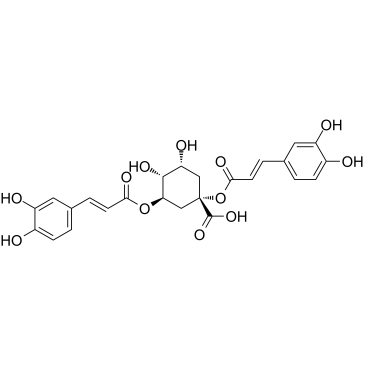
-
GC46481
1-Hydroxyphenazine
A P. aeruginosa virulence factor
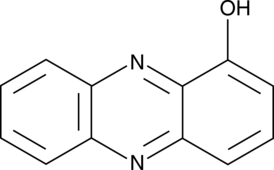
-
GC18235
1-O-Hexadecyl-sn-glycerol
1-O-Hexadecyl-sn-glycerol is a bioactive alkyl glyceryl ether.
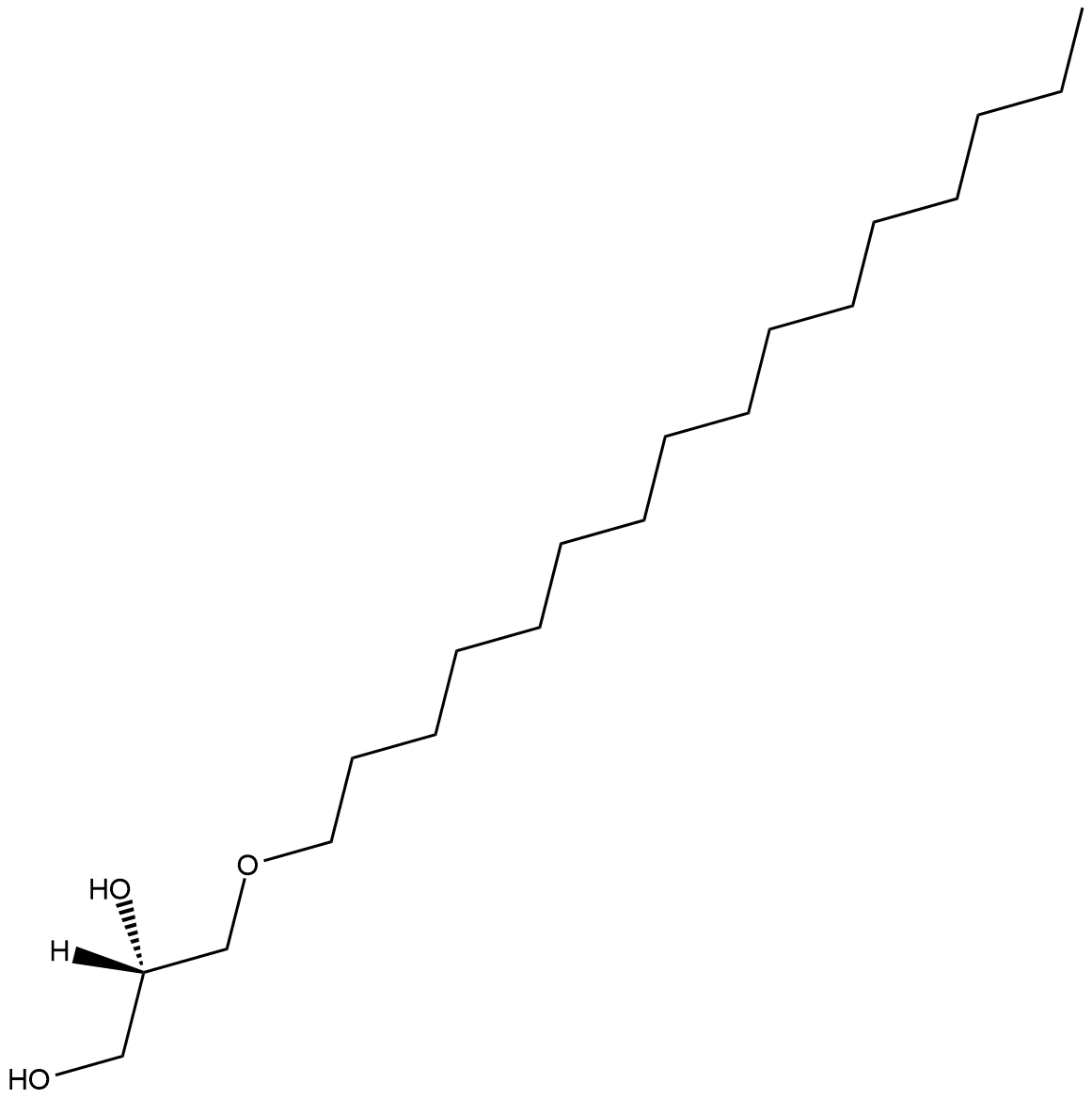
-
GC40146
1-Oleoyl-2-Palmitoyl-rac-glycerol
1-Oleoyl-2-palmitoyl-rac-glycerol (1,2-OP) is a diacylglycerol containing oleic acid at the sn-1 position and palmitic acid at the sn-2 position.

-
GC41866
10-methyl-9-(phenoxycarbonyl) Acridinium (trifluoromethylsulfonate)
10-methyl-9-(phenoxycarbonyl) Acridinium is an acridinium ester that produces fluorescent 10-methyl-9-acridone upon oxidation with hydrogen peroxide, persulfates, and other oxidants in alkaline conditions.
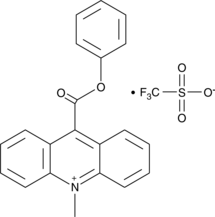
-
GC41868
10-Nitrooleate
10-Nitrooleate (CXA-10), a nitro fatty acid, has potential effects in disease states in which oxidative stress, inflammation, fibrosis, and/or direct tissue toxicity play significant roles.

-
GC67628
2',7'-Dichlorofluorescein
2',7'-Dichlorofluorescein acts as a fluorescent probe (Ex=496 nm and Em=525 nm) for reactive oxygen species (ROS) measurement.
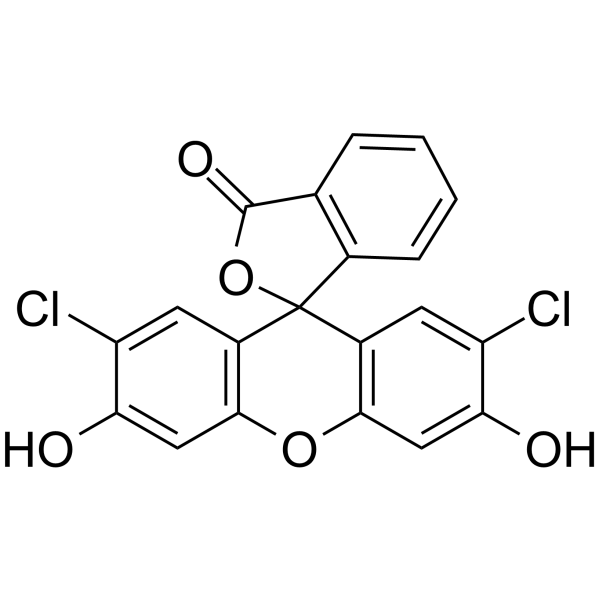
-
GC42079
2',7'-Dichlorofluorescein diacetate
2',7'-Dichlorofluorescein diacetate is as a cell-permeable fluorogenic probe to quantify reactive oxygen species (ROS) and nitric oxide (NO).

-
GC46057
2,5-Dihydroxycinnamic Acid phenethyl ester
An inhibitor of 5-LO

-
GC35095
2-Phospho-L-ascorbic acid trisodium salt
2-Phospho-L-ascorbic acid trisodium salt (2-Phospho-L-ascorbic acid trisodium) is a long-acting vitamin C derivative that can stimulate collagen formation and expression.
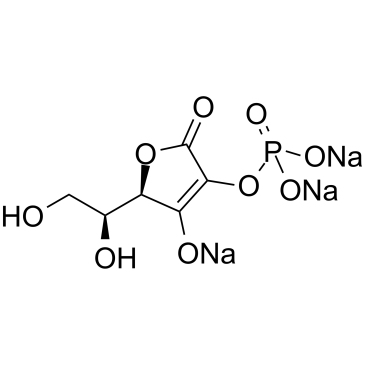
-
GC49005
2S-Eriodictyol
A flavanone with antioxidant activity
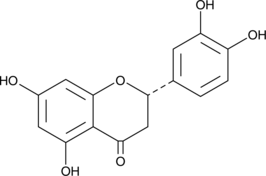
-
GN10006
3,4-Dihydroxybenzaldehyde
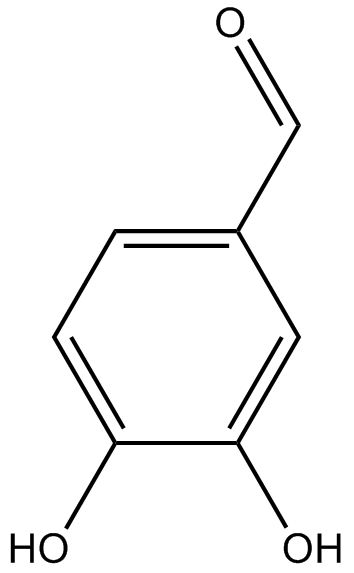
-
GC33992
3,4-Dimethoxycinnamic acid (O-Methylferulic acid)
3,4-Dimethoxycinnamic acid (O-Methylferulic acid) (O-Methylferulic acid) is a monomer extracted and purified from Securidaca inappendiculata Hassk.
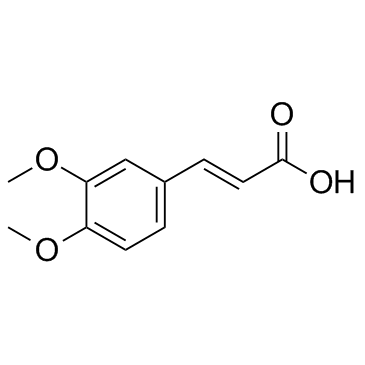
-
GC61673
3,5-Di-tert-butylphenol
3,5-Di-tert-butylphenol is an volatile organic compound with anti-biofilm and antifungal activities.

-
GC52324
3-(3-Hydroxyphenyl)propionic Acid sulfate
A metabolite of certain phenols and glycosides

-
GC14282
3-acetyl-11-keto-β-Boswellic Acid
3-acetyl-11-keto-β-Boswellic Acid (Acetyl-11-keto-β-boswellic acid) is an active triterpenoid compound from the extract of Boswellia serrate and a novel Nrf2 activator.
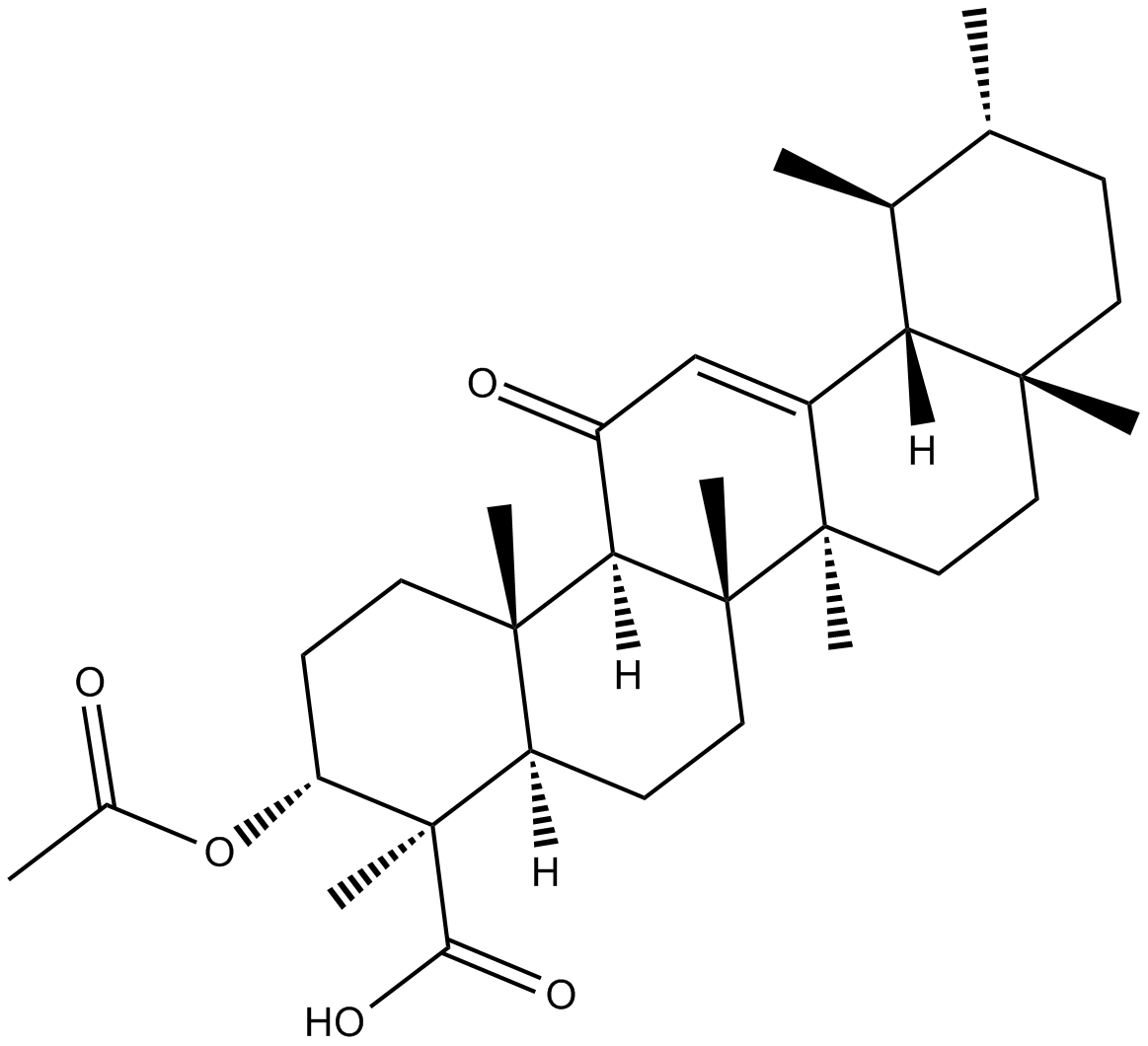
-
GC49849
3-Aminosalicylic Acid
A salicylic acid derivative
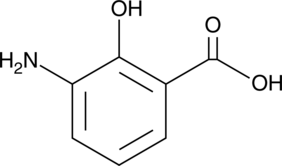
-
GC62794
3-Demethylcolchicine
3-Demethylcolchicine, a colchicine metabolite, possesses a hydroxy-group on its carbon ring that could participate in radical scavenging and markedly inhibits the carrageenin edema.
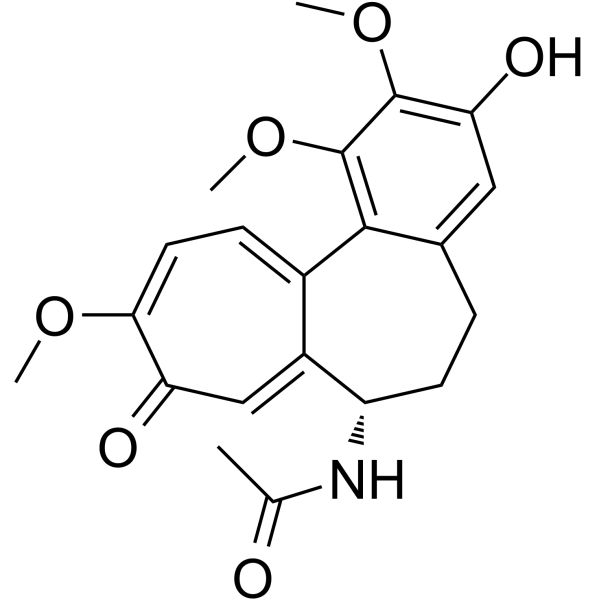
-
GC49364
3-Hydroxycoumarin
A coumarin with diverse biological activities
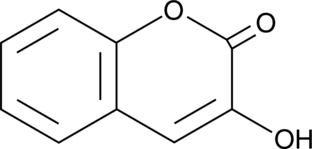
-
GC45337
3-Hydroxyterphenyllin
3-Hydroxyterphenyllin is a metabolite of Aspergillus candidus.3-Hydroxyterphenyllin suppresses proliferation and causes cytotoxicity against A2780/CP70 and OVCAR-3 cells. 3-Hydroxyterphenyllin induces S phase arrest and apoptosis. 3-Hydroxyterphenyllin has the potential for the research of ovarian cancer.
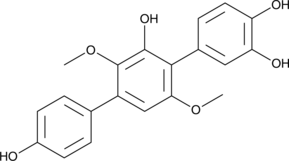
-
GC31290
3-Indolepropionic acid
A bacterial metabolite with antioxidant and neuroprotective activities

-
GC42338
4-Aminobenzoic Acid hydrazide
4-Aminobenzoic Acid hydrazide is an irreversible MPO myeloperoxidase inhibitor with an IC50 of 0.3 μM.
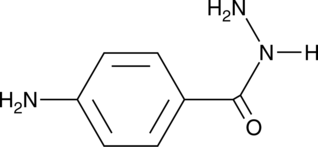
-
GC42351
4-carboxy TEMPO
4-carboxy TEMPO is a nitroxide and spin label.
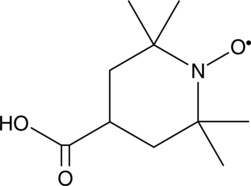
-
GC42401
4-hydroperoxy Cyclophosphamide
An activated analog of cyclophosphamide
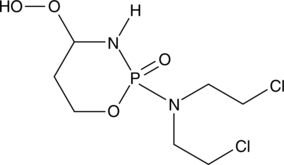
-
GC18858
4-hydroxy Alternariol
4-hydroxy Alternariol is a metabolite of the mycotoxin alternariol formed through cytochrome P450 (CYP450) metabolism.
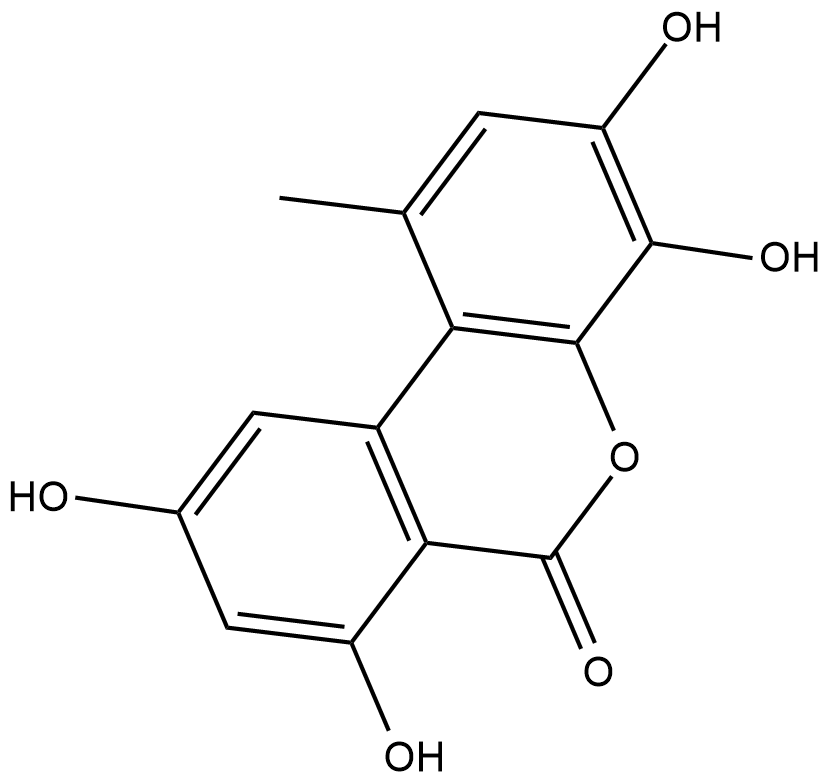
-
GC40477
4-Thiouracil
4-Thiouracil is a site-specific, photoactivatable probe used to detect RNA structures and nucleic acid-nucleic acid contacts.

-
GC49339
5(6)-Carboxy-2′,7′-dichlorofluorescein diacetate
An oxidant-sensitive fluorescent probe
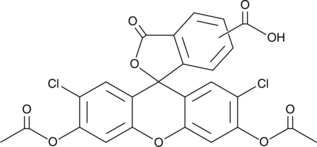
-
GC52227
5-(3',4'-Dihydroxyphenyl)-γ-Valerolactone
An active metabolite of various polyphenols

-
GC45357
5-Chlorouracil
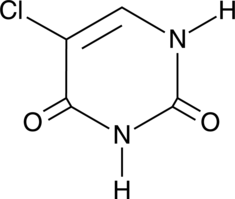
-
GC49233
5-Feruloylquinic Acid
A chlorogenic acid with antioxidant activity
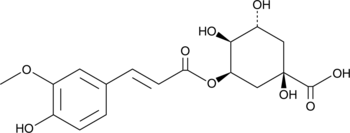
-
GC39760
5-Galloylquinic acid
5-Galloylquinic acid, an main scavenger of the reactive oxygen species (ROS) in green tea.
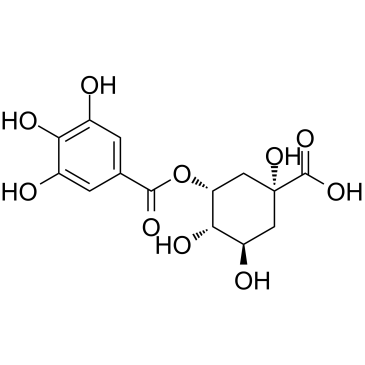
-
GC46033
5-Heneicosylresorcinol
An alkylresorcinol

-
GC61638
5-Hydroxyoxindole
5-Hydroxyoxindole is a structural analog of uric acid.
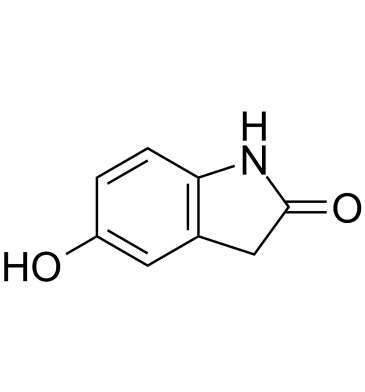
-
GC46079
5-Tricosylresorcinol
5-Tricosylresorcinolthe is the first cyst lipid.

-
GC49864
6-Methylpterin
A derivative of folic acid
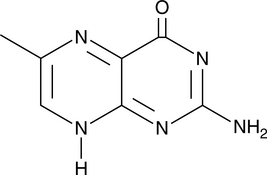
-
GC18776
6α-hydroxy Cholesterol
6α-hydroxy Cholesterol is an oxysterol that increases superoxide anion production in SK-N-BE cells when used at concentrations of 50 and 100 μM.
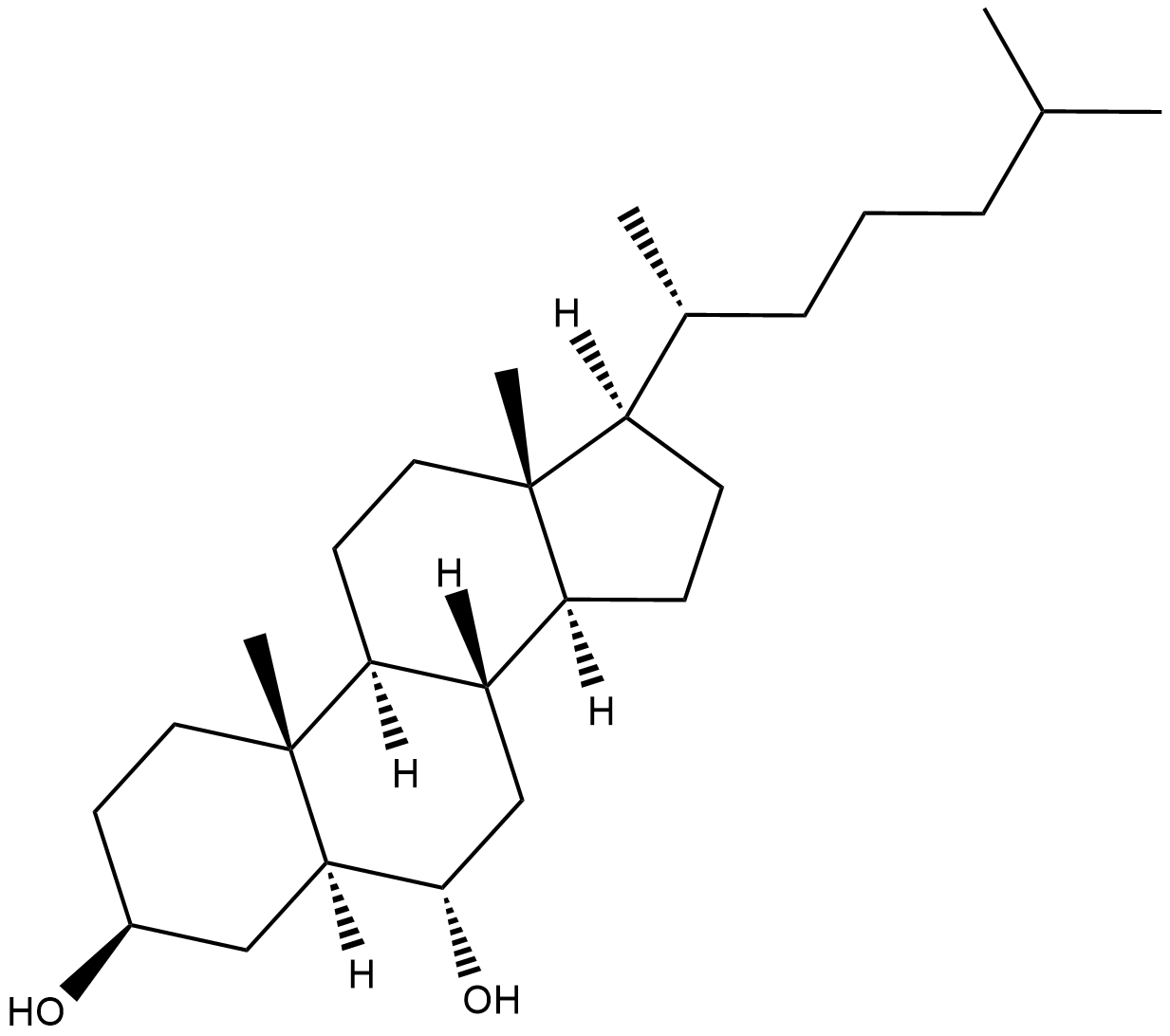
-
GC46080
7,3',4'-Trihydroxyflavone
7,3',4'-Trihydroxyflavone is a flavonoid aglycon compound isolated from broad bean pods.
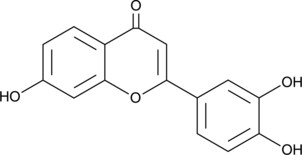
-
GC42627
8-Hydroxyguanine (hydrochloride)
8-Hydroxyguanine is produced by oxidative degradation of DNA by hydroxyl radical.
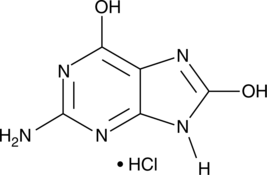
-
GC42642
9,10-Anthracenediyl-bis(methylene)dimalonic Acid
9,10-Anthracenediyl-bis(methylene)dimalonic acid (ABMDMA) is a reagent used to detect singlet oxygen generation.
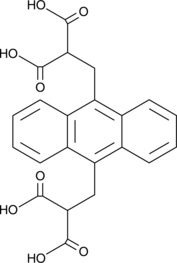
-
GC42649
9-Nitrooleate
Nitrated unsaturated fatty acids, such as 10- and 12-nitrolinoleate, cholesteryl nitrolinoleate, and nitrohydroxylinoleate, represent a new class of endogenous lipid-derived signalling molecules.
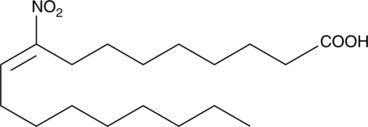
-
GC19496
AAPH
AAPH is a water-soluble azo compound

-
GC11786
Acetylcysteine
Acetylcysteine is the N-acetyl derivative of CYSTEINE.
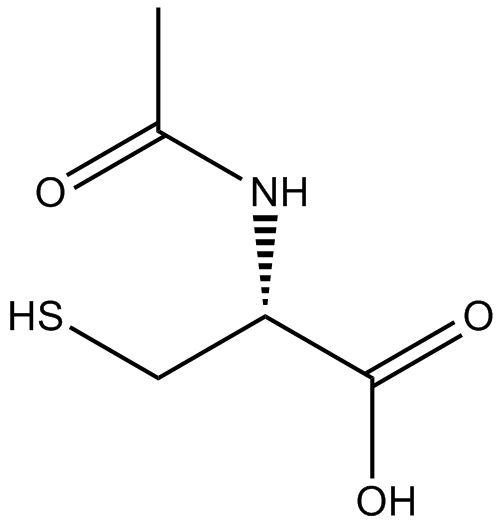
-
GN10298
Alibiflorin
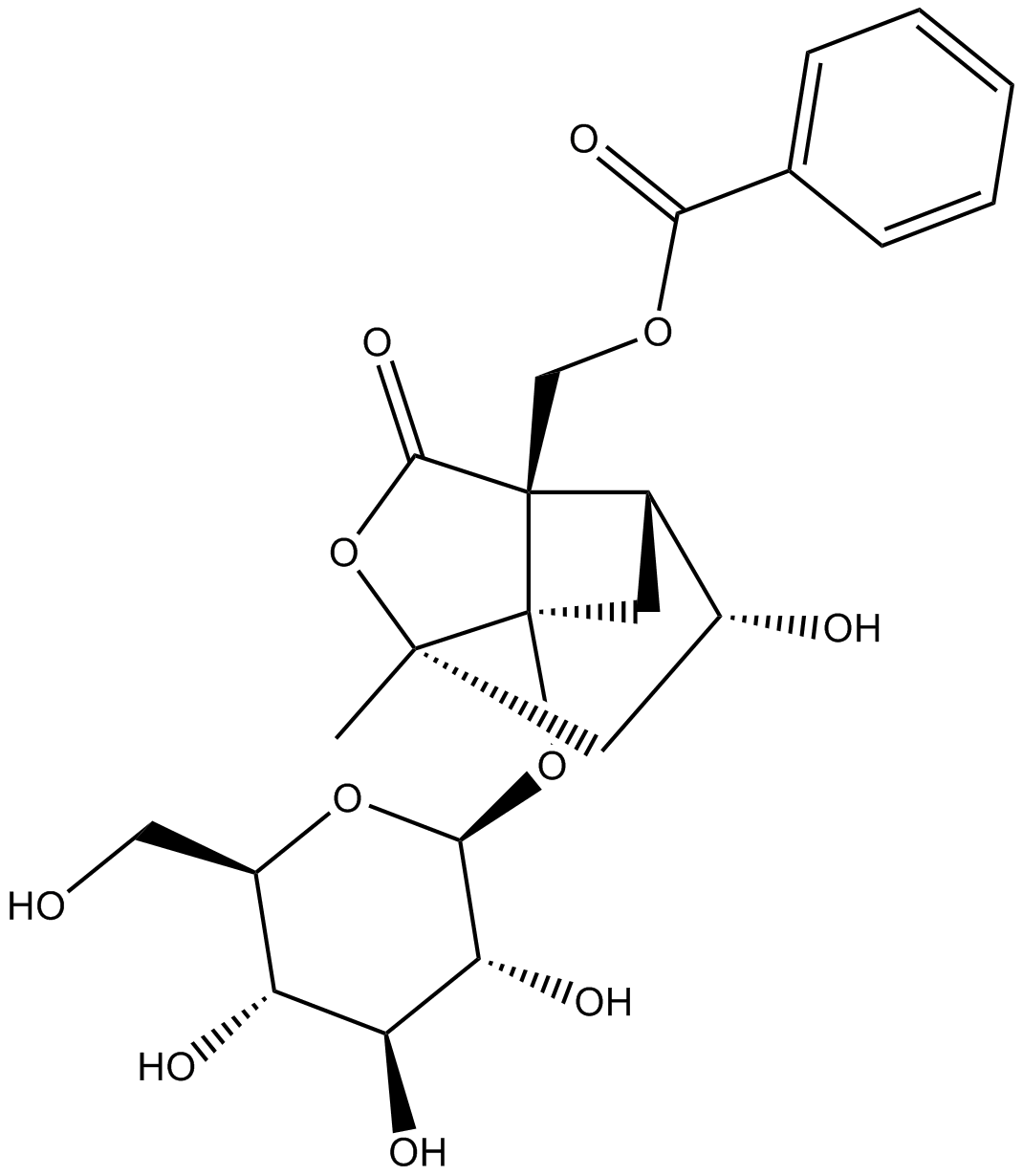
-
GC45379
Alloxan (hydrate)
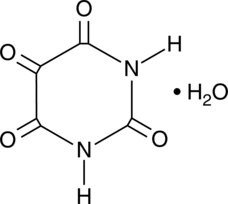
-
GC11443
Allylthiourea
Selective inhibitor of ammonia oxidation
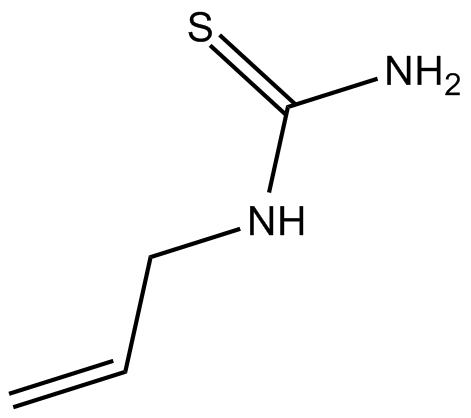
-
GC35306
alpha-Mangostin
alpha-Mangostin (α-Mangostin) is a dietary xanthone with broad biological activities, such as antioxidant, anti-allergic, antiviral, antibacterial, anti-inflammatory and anticancer effects. It is an inhibitor of mutant IDH1 (IDH1-R132H) with a Ki of 2.85 μM.
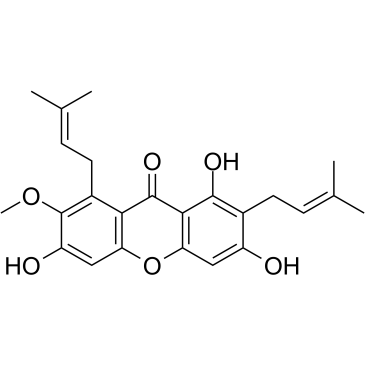
-
GN10484
Amentoflavone
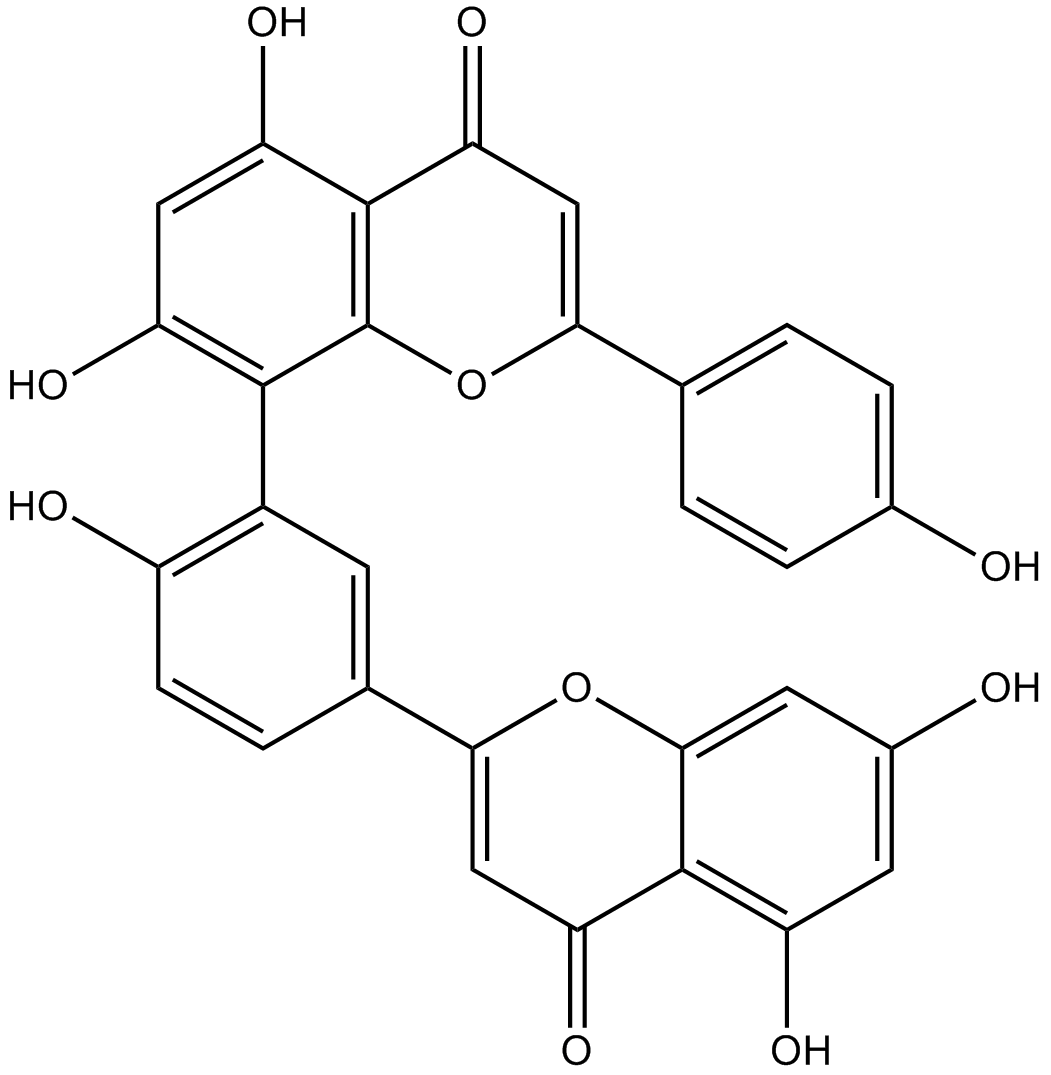
-
GC49336
AMK (hydrochloride)
An active metabolite of melatonin
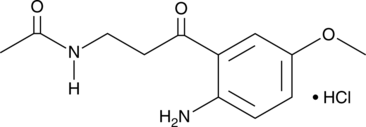
-
GC49259
Antagonist G (trifluoroacetate salt)
A neuropeptide antagonist
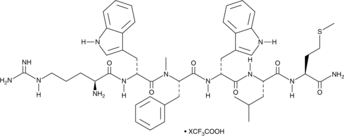
-
GC42825
APF
APF is an aromatic amino-fluorescein derivative and fluorescent probe for highly reactive radicals.
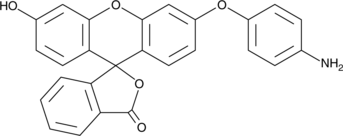
-
GN10509
Apigenin-7-O-β-D-glucopyranoside
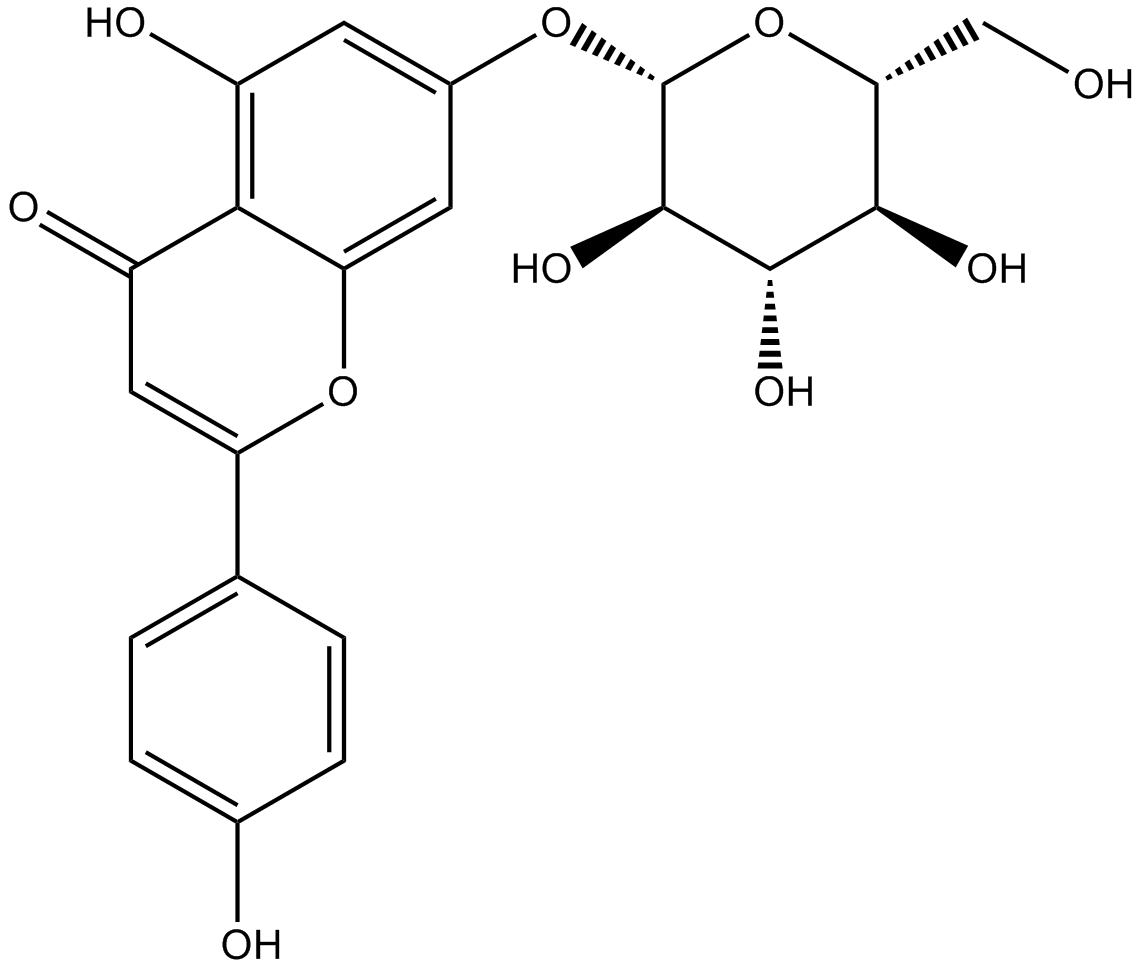
-
GC52332
Arimoclomol
A co-inducer of heat shock proteins
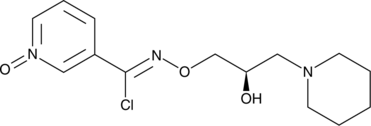
-
GC46005
Arjunolic Acid
A triterpene with diverse biological activities
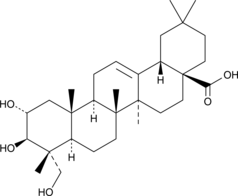
-
GC12070
Ascorbic acid
An electron donor
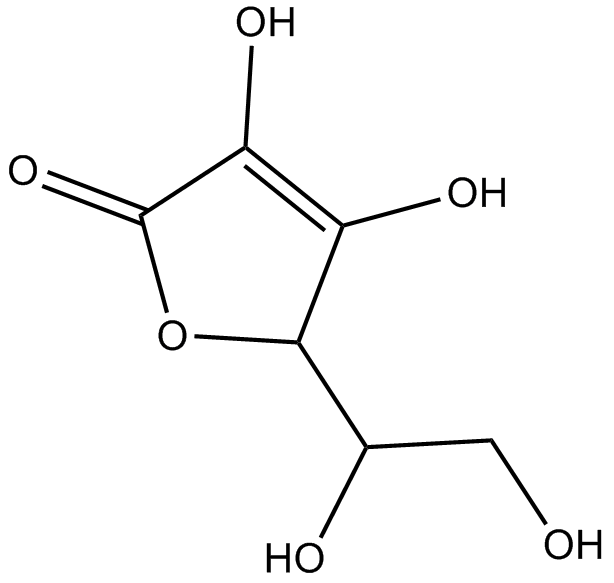
-
GN10534
Asiaticoside

-
GC31350
Astaxanthin
Astaxanthin, the red dietary carotenoid, is an orally effective and potent antioxidant.
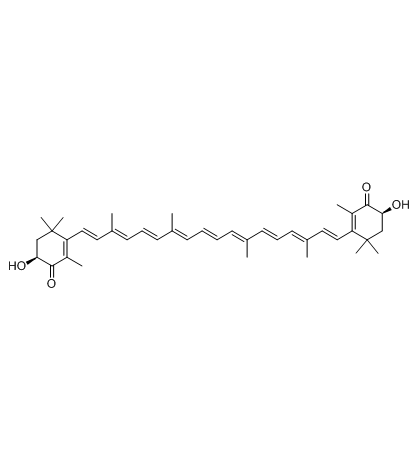
-
GC46904
Azoxystrobin
A broad-spectrum fungicide
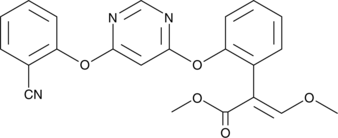
-
GC60616
AZT triphosphate
AZT triphosphate (3'-Azido-3'-deoxythymidine-5'-triphosphate) is a active triphosphate metabolite of Zidovudine (AZT).
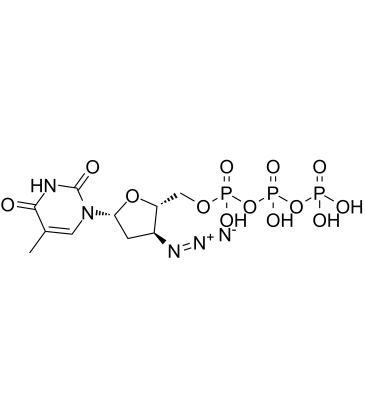
-
GC60617
AZT triphosphate TEA
AZT triphosphate TEA (3'-Azido-3'-deoxythymidine-5'-triphosphate TEA) is a active triphosphate metabolite of Zidovudine (AZT).
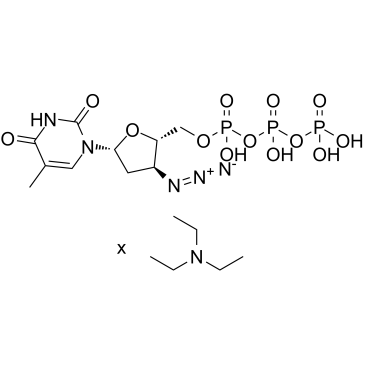
-
GC17574
BAPTA
calcium chelator
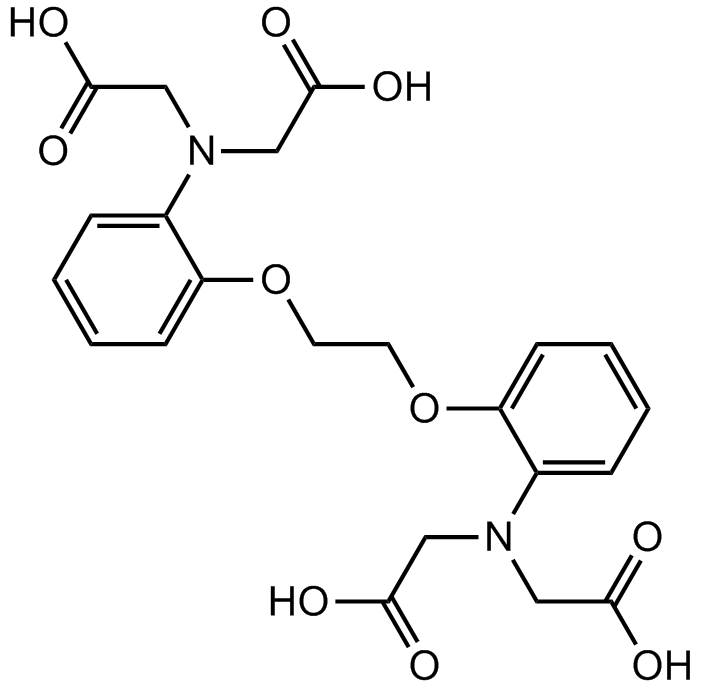
-
GC15949
Benfotiamine
A lipid-soluble form of vitamin B1
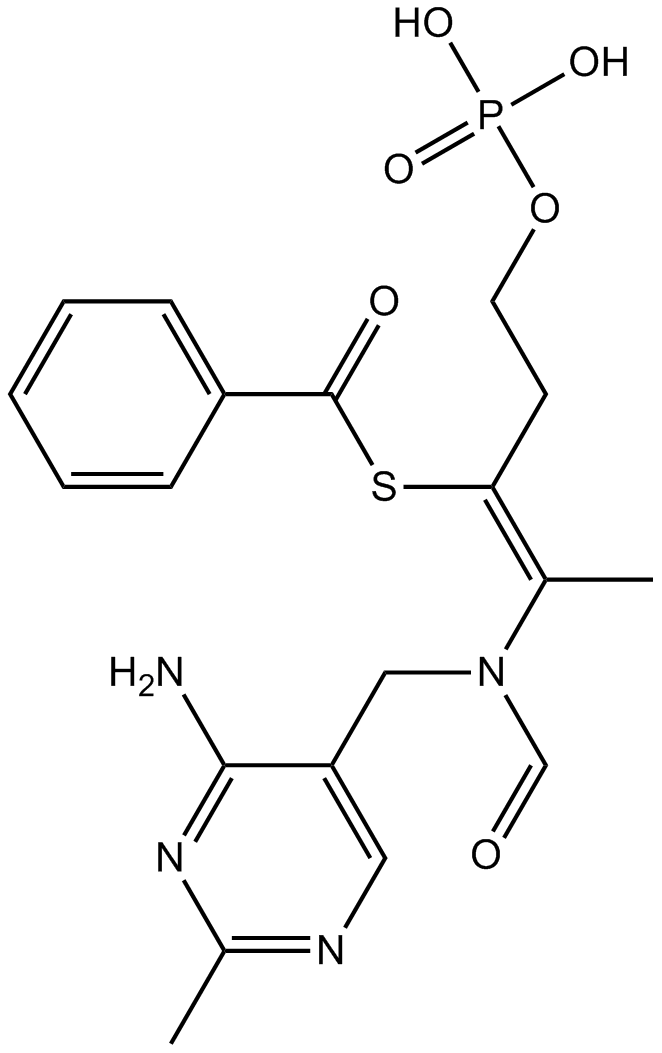
-
GN10221
Berberine
Berberine (Natural Yellow 18) is an alkaloid isolated from the Chinese herbal medicine Huanglian, as an antibiotic. Berberine (Natural Yellow 18) induces reactive oxygen species (ROS) generation and inhibits DNA topoisomerase.
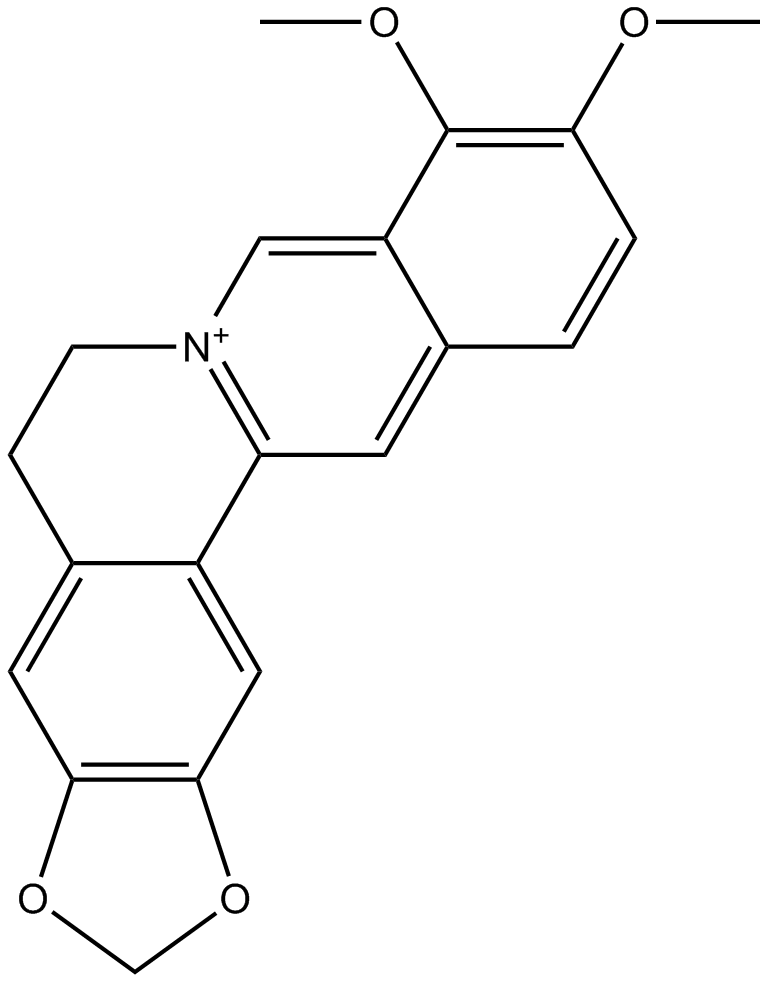
-
GC35497
Berberine chloride hydrate
Berberine chloride hydrate (Natural Yellow 18 chloride hydrate) is an alkaloid that acts as an antibiotic. Berberine chloride hydrate induces reactive oxygen species (ROS) generation and inhibits DNA topoisomerase. Antineoplastic properties.
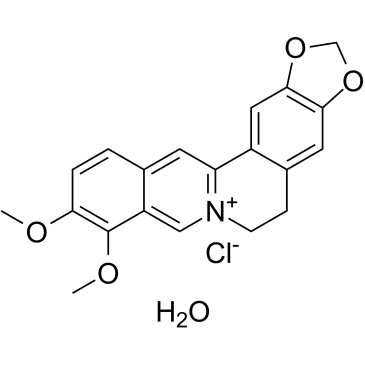
-
GN10208
Berberine hydrochloride
Berberine hydrochloride is an isoquinoline alkaloid derived from the Ranunculaceae medicinal plant Coptis chinensis. It has various pharmacological activities such as anti-tumor, anti-inflammatory, and hypoglycemic activities.

-
GN10523
Berberine Sulfate
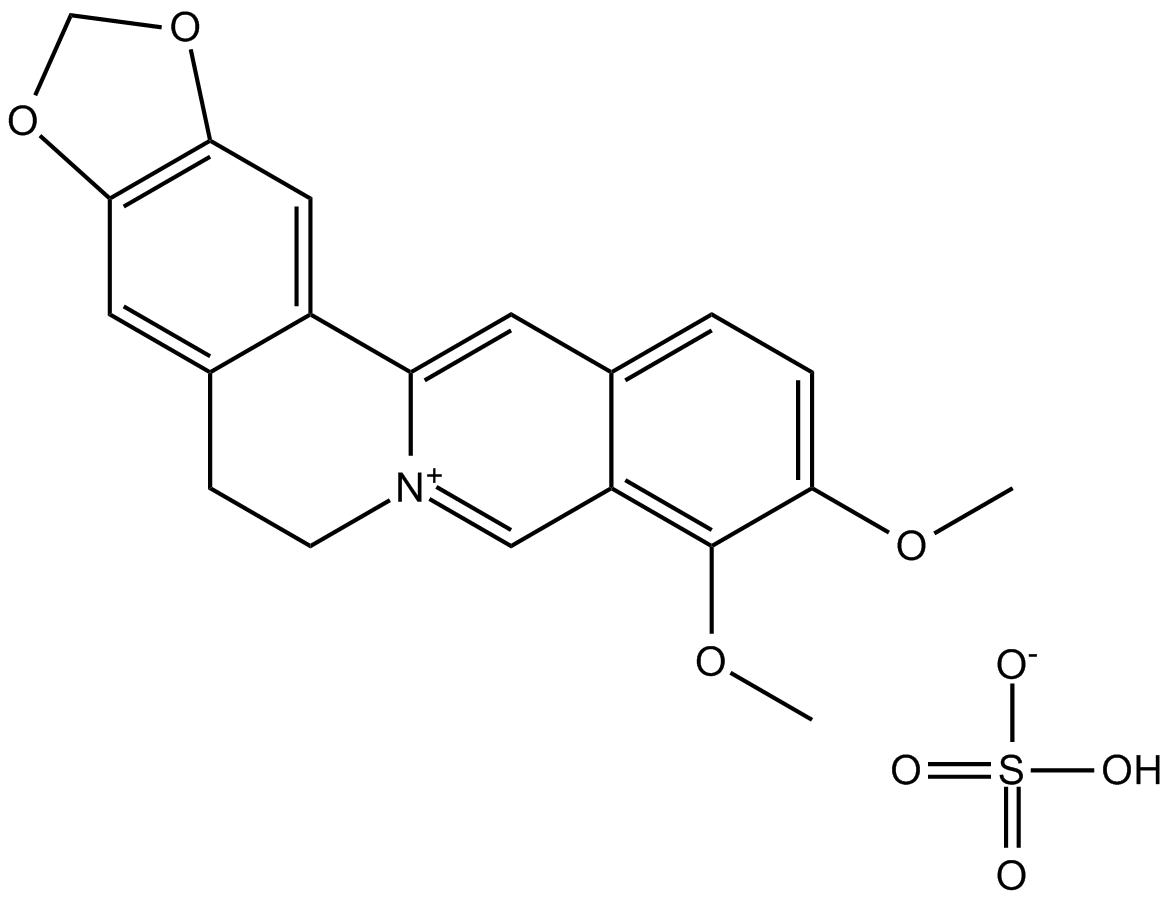
-
GC60076
Bigelovin
Bigelovin, a sesquiterpene lactone isolated from Inula helianthus-aquatica, is a selective retinoid X receptor α agonist. Bigelovin suppresses tumor growth through inducing apoptosis and autophagy via the inhibition of mTOR pathway regulated by ROS generation.
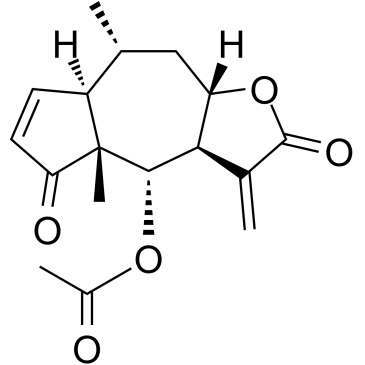
-
GC49708
Biliverdin (technical grade)
A bile pigment
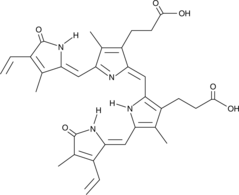
-
GC66485
Bis[3,4,6-trichloro-2-(pentyloxycarbonyl)phenyl] oxalate
Bis[3,4,6-trichloro-2-(pentyloxycarbonyl)phenyl] oxalate is a fluorescent dye that can be used for generation of chemiluminescence.
![Bis[3,4,6-trichloro-2-(pentyloxycarbonyl)phenyl] oxalate Chemical Structure Bis[3,4,6-trichloro-2-(pentyloxycarbonyl)phenyl] oxalate Chemical Structure](/media/struct/GC6/GC66485.png)
-
GC35529
Bixin
Bixin (BX), isolated from the seeds of Bixa orellana, is a carotenoid, possessing anti-inflammatory, anti-tumor and anti-oxidant activities.
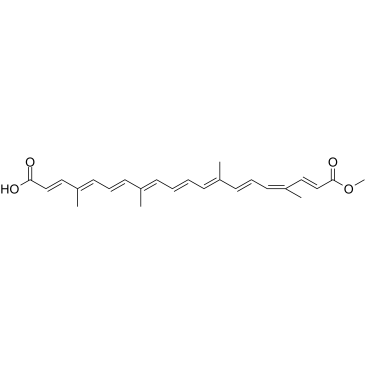
-
GC41397
BMPO
BMPO is a cyclic nitrone spin trap agent, it is a water-soluble white solid which makes BMPO purification easier than other spin trap agents.
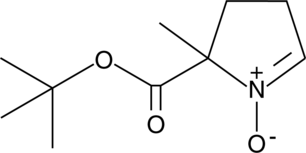
-
GC16921
Bromhexine HCl
Bromhexine HCl is a potent and specific TMPRSS2 protease inhibitor with an IC50 of 0.75 μM.
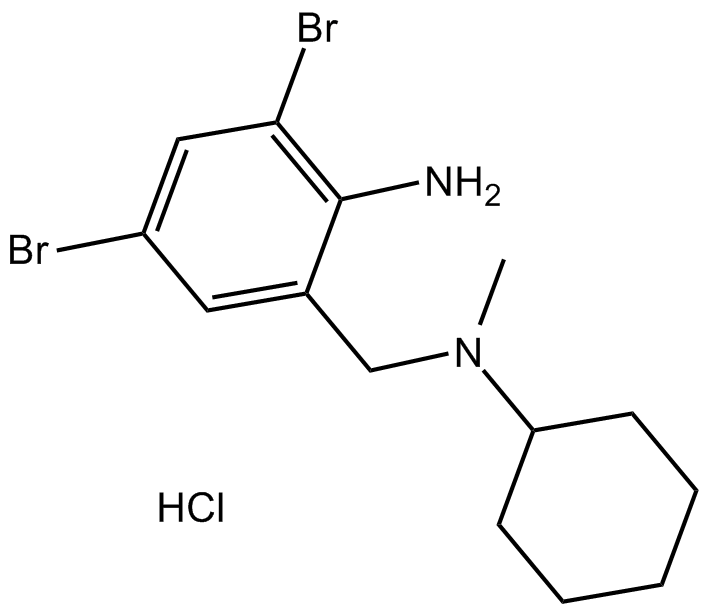
-
GC33134
Bufotalin
Bufotalin is a steroid lactone isolated from Venenum Bufonis with potently antitumor activities. Bufotalin induces cancer cell apoptosis and also induces endoplasmic reticulum (ER) stress activation.
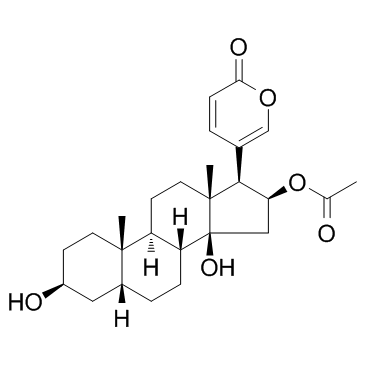
-
GC46960
Buprofezin
An insecticide
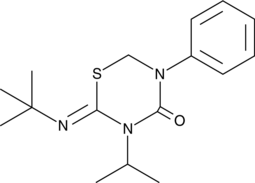
-
GC30067
Butylhydroxyanisole (Butylated hydroxyanisole)
Butylhydroxyanisole (Butylated hydroxyanisole) (Butylated hydroxyanisole) is an antioxidant used as a food additive preservative.
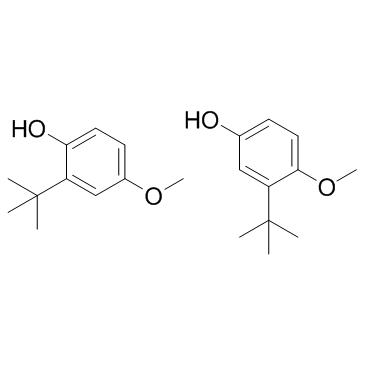
-
GN10356
Calycosin-7-glucoside
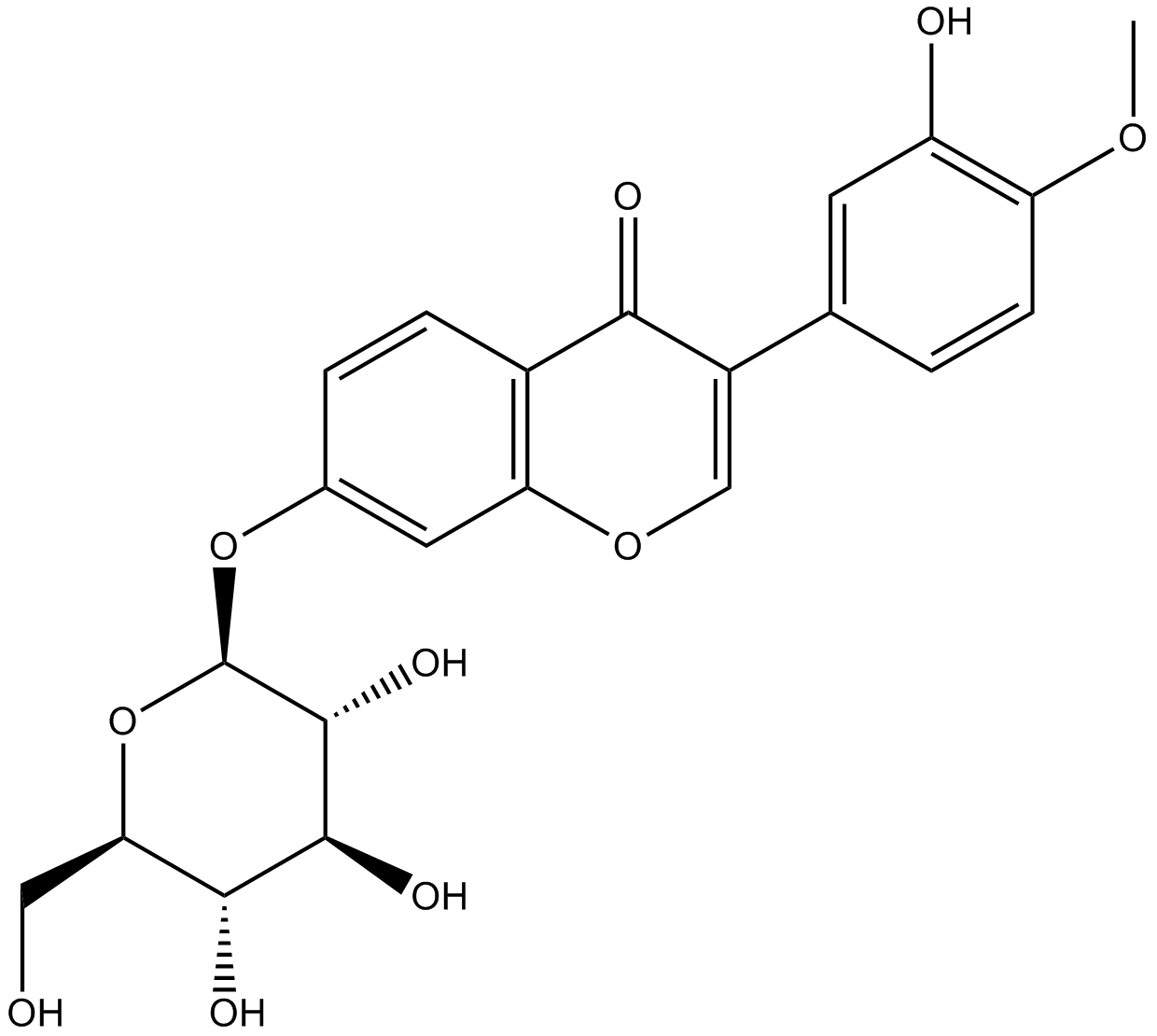
-
GC18922
Camalexin
Camalexin is an alkaloid released by plants of the Brassicaceae family in response to pathogen infection.

-
GC30495
Canthaxanthin (E 161g)
Canthaxanthin (E 161g) is a red-orange carotenoid with various biological activities, such as antioxidant, antitumor properties.
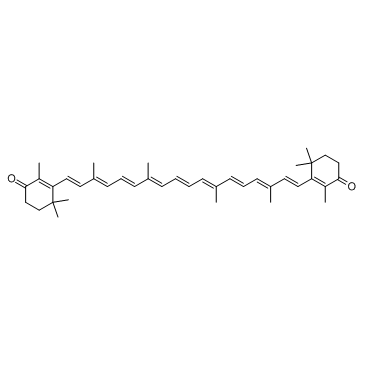
-
GC65429
Capillarisin
Capillarisin, as a constituent from Artemisiae Capillaris herba, is found to exert anti-inflammatory and antioxidant properties.
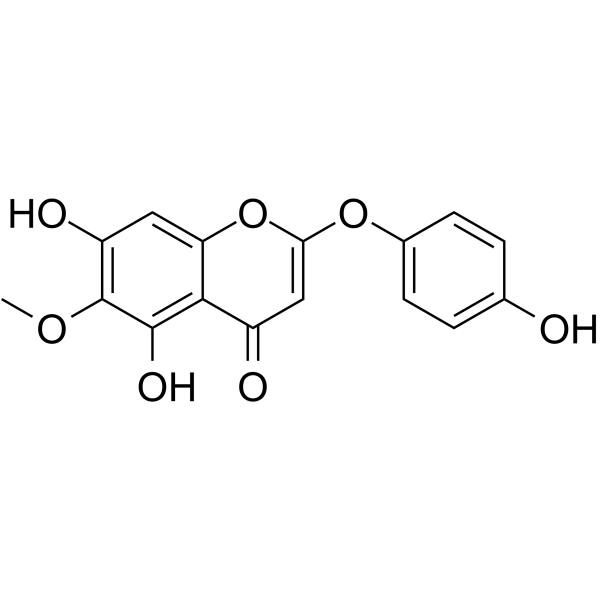
-
GC43139
Capsanthin
Capsanthin is a carotenoid that has been found in red paprika and has diverse biological activities.

-
GC60674
Catalase from Aspergillus niger
Catalase is a key enzyme in the metabolism of H2O2 and reactive oxygen species (ROS), and its expression and localization is markedly altered in tumors.
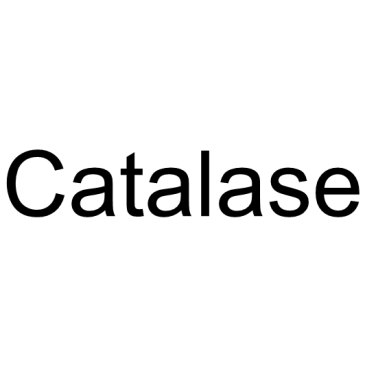
-
GC64933
Catalase from bovine liver
Catalase is a key enzyme in the metabolism of H2O2 and reactive oxygen species (ROS), and its expression and localization is markedly altered in tumors[1].
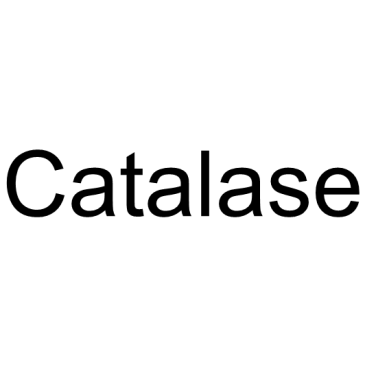
-
GC61865
Cearoin
Cearoin increases autophagy and apoptosis through the production of ROS and the activation of ERK.
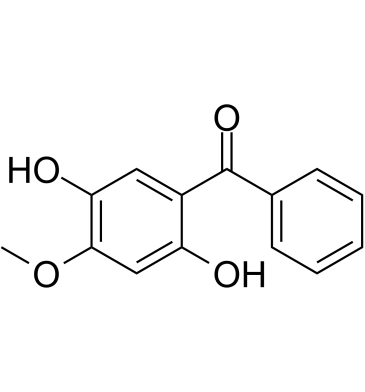
-
GC52081
Chamazulene
Chamazulene is a terpene that has been found in chamomile (M. recutita) flowers and has anti-inflammatory and antioxidant activities.
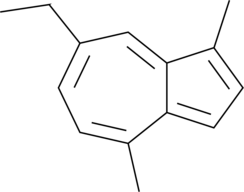
-
GC64993
Chicoric acid
Chicoric acid (Cichoric acid), an orally active dicaffeyltartaric acid, induces reactive oxygen species (ROS) generation.
